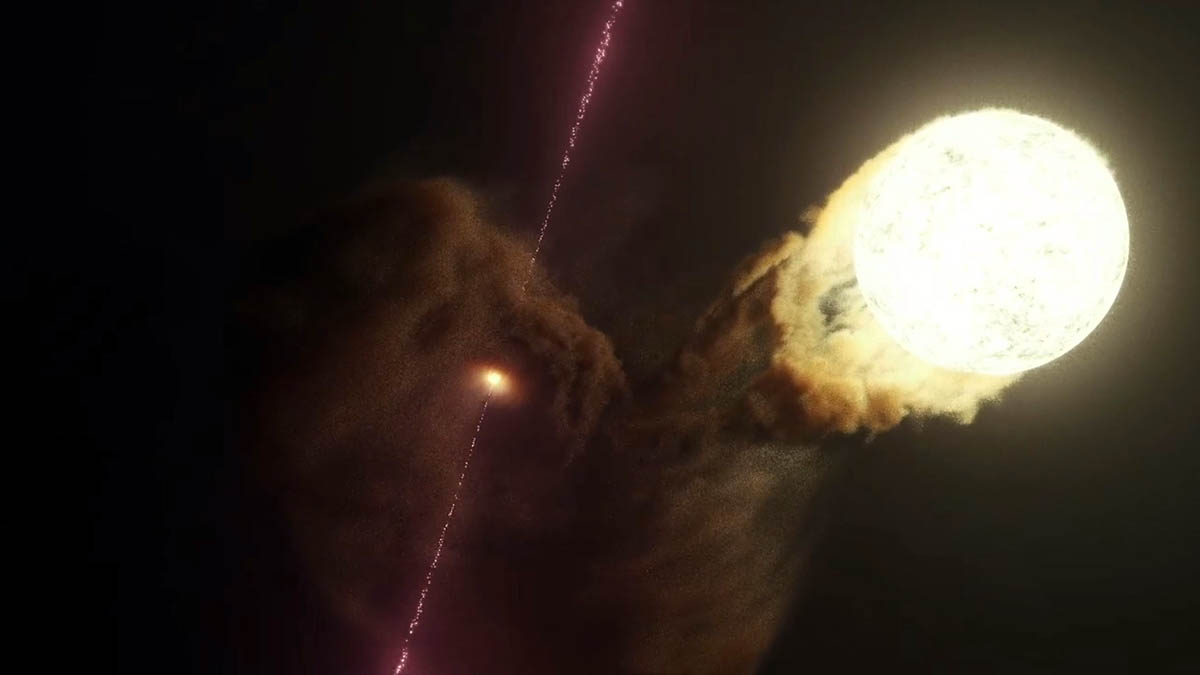This illustration shows SS 433, a black hole or neutron star, as it pulls material away from its companion star. The stellar material forms a disk around SS 433, and some of the material is ejected into space in the form of two thin jets (pink) traveling in opposite directions away from SS 433. (DESY/Science Communication Lab)
Home This illustration shows SS 433, a black hole or neutron star, as it pulls material away from its companion star. The stellar material forms a disk around SS 433, and some of the material is ejected into space in the form of two thin jets (pink) traveling in opposite directions away from SS 433. (DESY/Science Communication Lab) This illustration shows SS 433, a black hole or neutron star, as it pulls material away from its companion star. The stellar material forms a disk around SS 433, and some of the material is ejected into space in the form of two thin jets (pink) traveling in opposite directions away from SS 433. (DESY/Science Communication Lab)
This illustration shows SS 433, a black hole or neutron star, as it pulls material away from its companion star. The stellar material forms a disk around SS 433, and some of the material is ejected into space in the form of two thin jets (pink) traveling in opposite directions away from SS 433. (DESY/Science Communication Lab)



